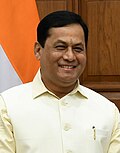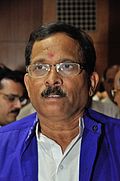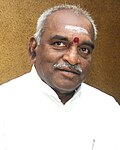| Branch of Government of India | |
 Ministry of Ports, Shipping and Waterways | |
 | |
 Indian Port | |
| Agency overview | |
|---|---|
| Jurisdiction | Government of India |
| Headquarters | Parivahan Bhavan 1, Parliament Street New Delhi 110001 28°37′9.58″N77°12′37.29″E / 28.6193278°N 77.2103583°E |
| Annual budget | ₹1,881.83 crore (US$220 million) (2018-19 est.) [1] |
| Minister responsible |
|
| Website | shipmin |
The Ministry of Ports, Shipping and Waterways is the Indian ministry responsible for formulation and administration of the rules, regulations and laws relating to ports, shipping and waterways. The minister is Sarbananda Sonowal.
















